Order flows and defense contracts reshape capital allocation
Subtitle: Aerospace orders, defense contracts and data‑center plays are driving divergence in valuation and flows across the sector.
Market catalyst: Big-ticket orders and government spend set the tone
Two concrete demand drivers are dominating investor attention: airline fleet orders and military/defense contract awards. Turkish Airlines’ purchase framework for up to 75 Boeing 787 Dreamliners plus negotiations for an additional 150 737‑8/10 MAX jets (225 aircraft announced) and a separate Norwegian order for 30 737‑8 planes translate into tangible backlog and production cadence for OEMs. On the defense side, General Dynamics’ $1.5 billion STRATCOM IT modernization contract and RTX’s $60 million F135 propulsion award signal steady revenue visibility. These items show why Order count and Contract value are moving capital decisions this week.
High‑impact developments — the headlines that matter
1) Boeing (BA): Multiple large orders — 75 Dreamliners and 150 737‑MAX class jets tied to Turkish Airlines plus a 30‑plane 737‑8 order from Norwegian — are the clearest demand signals; Jim Cramer noted a near 36% gain for BA from earlier weakness, underlining strong investor sentiment.
2) Defense wins: General Dynamics (GD) captured a $1.5 billion enterprise IT modernization contract covering a one‑year base and six option years; RTX (RTX) secured a $60 million propulsion systems award through 2027.
3) Data‑center and tech M&A/expansion: Axon (AXON) announced an acquisition of Prepared and saw its stock trade up ~2.9% intraday; Vertiv (VRT) commentary highlights continued investor interest in data center infrastructure despite a recent pullback.
4) Corporate distributions & results: GE Vernova (GEV) declared a $0.25 quarterly dividend; CTAS reported Q3 sales up 8.7% y/y to $2.72 billion and GAAP EPS of $1.20; Delta (DAL) declared a $0.1875 quarterly dividend.
Capital flows and sentiment: Where money is rotating
Institutional re‑rating and tactical inflows are visible in analyst actions and technical upgrades. Wells Fargo upgraded CSX to Overweight and raised its price target from $37 to $40, signaling growing interest in intermodal freight as a return stream. Quanta Services earned a Relative Strength upgrade (RS 79→82), suggesting technical buying. JP Morgan initiated coverage on Rollins with an Overweight call, while Kirby (KEX) approved an $8 million buyback — a direct capital return that often precedes increased insider or institutional accumulation.
Vertical performance: Aerospace, defense, logistics, and data‑center equipment
Aerospace shows momentum: Boeing’s fresh orders point to durable widebody and narrowbody demand and higher production cadence, supporting revenue visibility and backlog metrics. Defense is cash‑flow positive: GD’s $1.5B STRATCOM contract and RTX’s $60M award improve backlog and margin visibility. Rail and logistics are bifurcated — CSX won an upgrade citing intermodal gains even as industry volumes slow; UNP and CNI retain positive analyst stances. Data‑center equipment (Vertiv, Cummins’ underappreciated data‑center exposure) is positioned for secular growth tied to AI, while industrial machinery (Caterpillar, Deere) faces mixed sentiment — CAT noted as having “more upside” by commentators but Deere has been downgraded to Hold amid macro headwinds.
Valuation snapshot: Momentum premium vs. tactical dislocations
Valuation signals in the tape are mixed and driven by momentum rather than uniform multiple expansion. RTX is trading at all‑time highs and carries a dividend yield of ~1.68%, implying a momentum premium; by contrast, several names showed intraday weakness — Emerson (EMR) closed at $130.11, down 1.37% and Paccar (PCAR) closed at $95.57, down 1.36%. CTAS posted an 8.7% revenue increase to $2.72B and GAAP EPS $1.20, yet guidance commentary included an unusual statement that full‑year midpoint guidance was materially below expectations. These dispersion signals point to selective opportunities where Revenue growth and technicals diverge from headline multiples.
Key risks highlighted by recent headlines
Geopolitical and execution risks are explicit. The Turkish Airlines order remains partially contingent on engine negotiations; Reuters coverage noted the deals were subject to engine talks. Rail and intermodal gains come as industrywide volume growth slows, a macro risk for CSX and peers. Competitive technology developments — for example, noted data‑center cooling or OEM advances — create contestability for Vertiv and Cummins’ growing data‑center exposure. Market sentiment also reacted to earnings and trading moves: GE Vernova fell ~3.41% to $607.52 and Emerson slipped 1.37%, underscoring sensitivity to short‑term news.
Watchlist — catalysts to track near term
1) Boeing (BA): Monitor production cadence and confirmed delivery schedules tied to the Turkish 225‑aircraft framework and Norwegian 30‑plane order; order confirmations will impact backlog and 2026 revenue run‑rate.
2) General Dynamics (GD): The $1.5 billion STRATCOM contract (one‑year base plus six option years) is a near‑term revenue and margin catalyst; watch option exercise timing.
3) Vertiv (VRT) / data‑center theme: Track analyst reiterations and macro AI capex commentary after recent pullbacks and buy ratings; market technicals suggest a near‑term buy point is forming.
Bottom line
Concrete order flow (Boeing’s 30–225 aircraft orders) and fixed‑term government contracts (GD $1.5B, RTX $60M) create predictable revenue lanes that are attracting capital even as other industrial names trade on headline volatility. Watch contract confirmations, buyback programs ($8M at Kirby), and dividend declarations ($0.25 at GEV, $0.1875 at DAL) as proximate signals of institutional conviction.
Key terms: Order count, Contract value, Revenue growth, Price change%, Dividend












